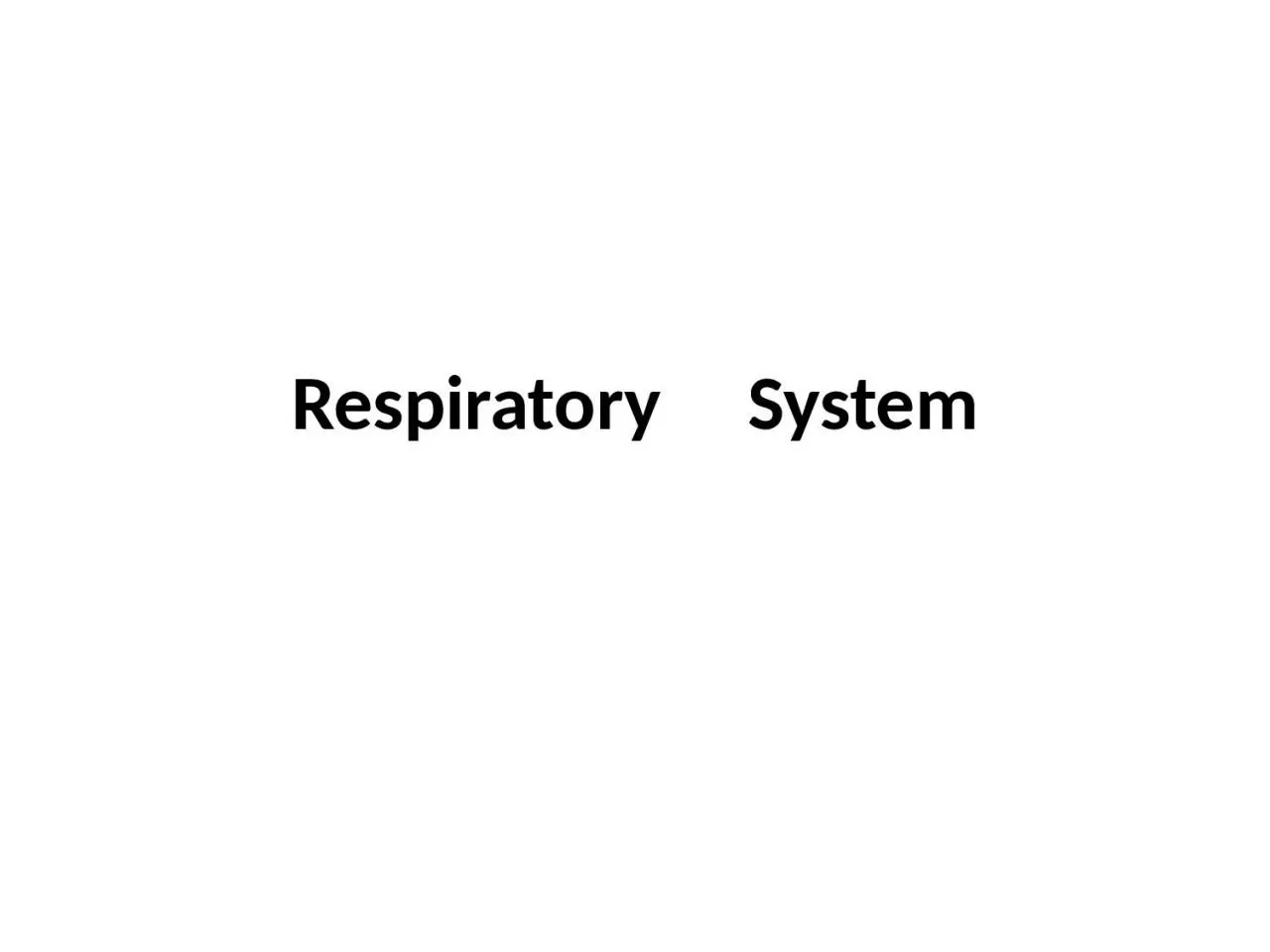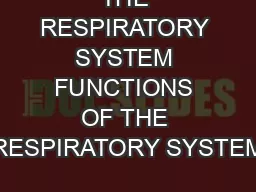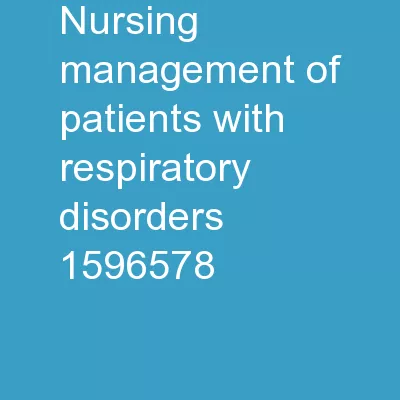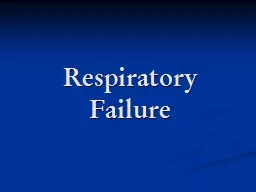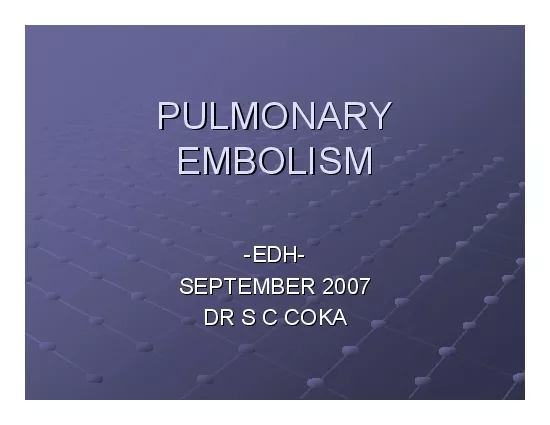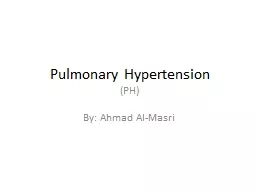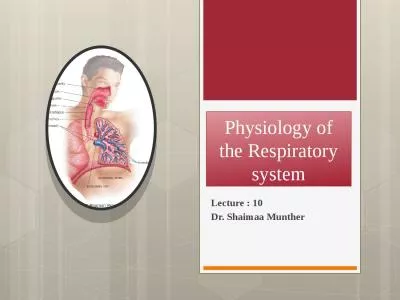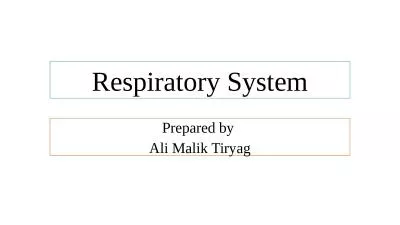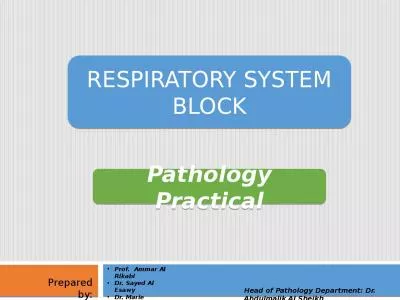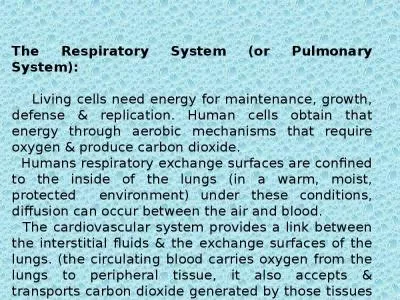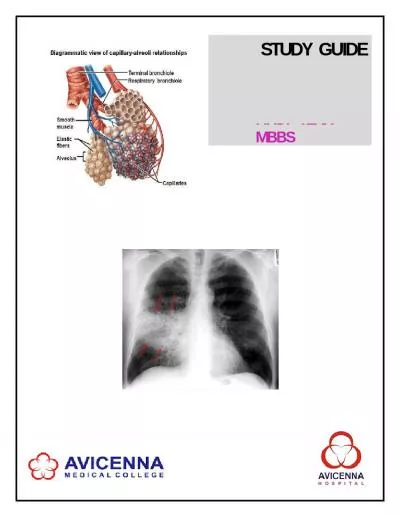PPT-Respiratory System Pulmonary compliance
Author : tabitha | Published Date : 2023-11-22
The ease with which lungs amp thoracic wall can be expanded extent to which lung will expand for each unit increase in transpulmonary pressure Compliant lungs
Presentation Embed Code
Download Presentation
Download Presentation The PPT/PDF document "Respiratory System Pulmonary complia..." is the property of its rightful owner. Permission is granted to download and print the materials on this website for personal, non-commercial use only, and to display it on your personal computer provided you do not modify the materials and that you retain all copyright notices contained in the materials. By downloading content from our website, you accept the terms of this agreement.
Respiratory System Pulmonary compliance: Transcript
Download Rules Of Document
"Respiratory System Pulmonary compliance"The content belongs to its owner. You may download and print it for personal use, without modification, and keep all copyright notices. By downloading, you agree to these terms.
Related Documents

